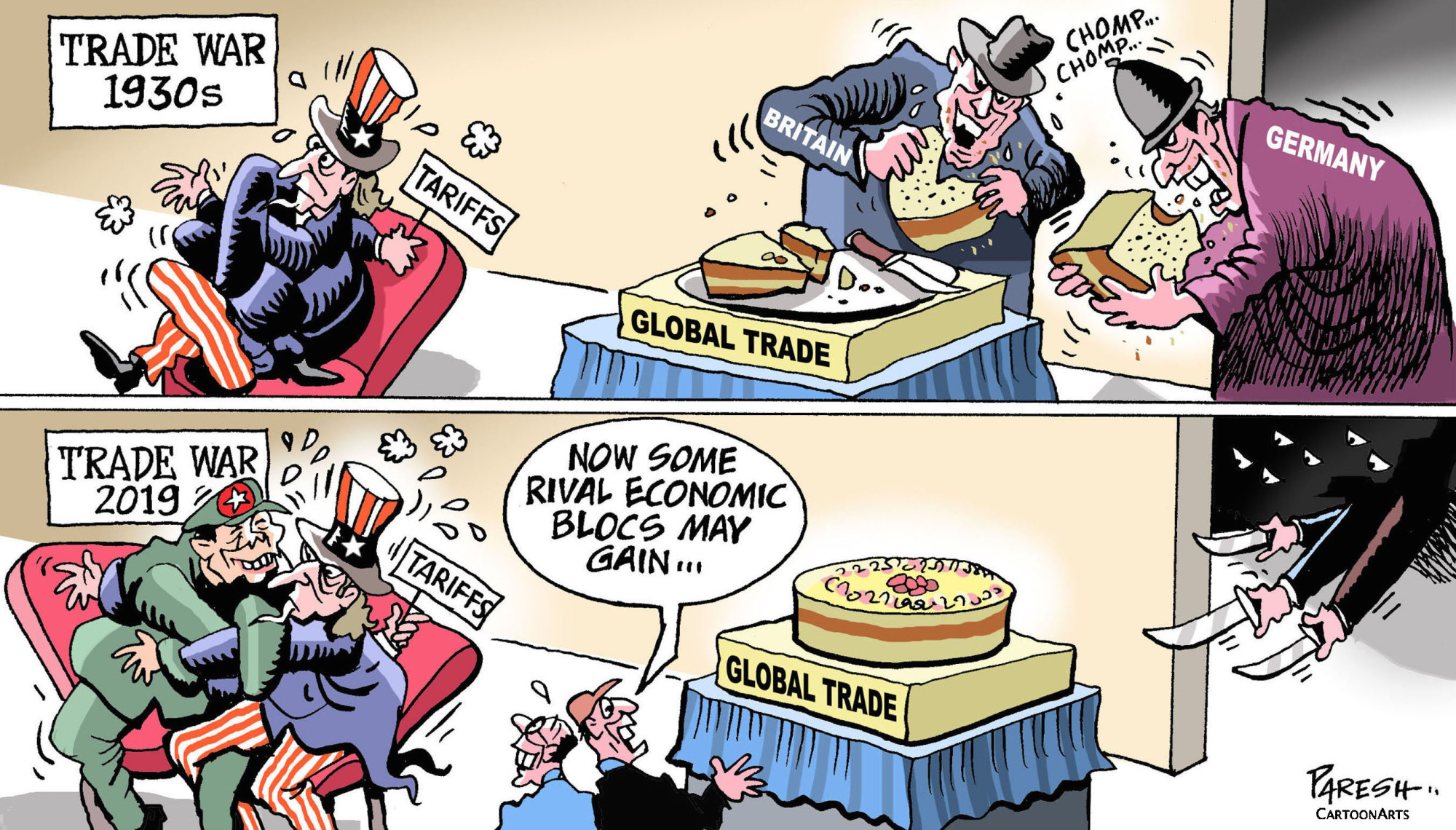Many people liken the trade war between the United States and China to the situation triggered by the Great Depression, when the world's major economies competed with one another to raise import tariffs and threw the global economy into severe turmoil. They are wrong.
When an importing country hikes its tariffs, businesses in the exporter country incur losses either when they are unable to pass the cost of higher tariffs sufficiently on to the consumers or when they see the volume of their sales decline due to higher prices. But unlike the days when the whole process from production of parts to the manufacturing of finished products was completed within national borders, today parts made in a certain country are typically shipped to another to be assembled and traded from there.
For example, China imports parts and components from Japan, Taiwan, Thailand and so on to build the finished products that it ships to the U.S. If the product is priced at $10,000 and the aggregate value of the imported parts amounts to $9,000, the damage incurred by China will only be its added value of $1,000.


















With your current subscription plan you can comment on stories. However, before writing your first comment, please create a display name in the Profile section of your subscriber account page.